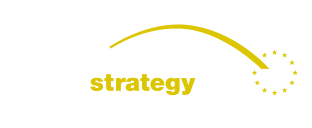Project: in planning phase
Submitted by / EUSDR Priority Area(s): PA 5 Environmental Risks
Mining is one of the world’s most traditional industrial sectors, and continues to provide valuable ores and minerals. A significant waste stream however, is generated by these operations. One of the components of mining waste is mining tailings – such as waste rock and mine water – and this all needs to be stored and handled in tailings management facilities (TMFs). Due to the physical characteristics and chemical nature of substances that can be found in the tailings, TMFs pose risks to both environment and population. Pollution of water bodies and the related risk or damage to environmental resources often has a negative transboundary effect too, and accidents at TMFs may lead to long-term negative and chronic effects. More than 300 TMFs are located in the Danube River Basin (DRB), for which adequate safety conditions and measures have to be put in place. Past accident events dramatically demonstrated how serious impacts on people and water resources TMF failures could have.
Objectives
This project proposal aims to close practical knowledge gaps while raising awareness of TMFs and their hazards in the Danube River Basin (DRB) and strengthening the technical and management capacity relating to these facilities.
Need and (expected) impact
Respecting a common set of minimum standards and safety requirements in the DRB to reduce accident risks, providing tools and strategies to improve TMF safety, updating and completing the TMF inventory of the DRB, amending an existing hazard assessment method and integrating land use planning aspects into it (risk), further enhancing and completing a previously developed detailed checklist method, providing recommendations for the Danube Region countries on managing TMFs and ensuring sustainability of the results.
Macro-regional dimension
Potentially all Danube Region countries are going to be involved
Stakeholders involved
Universities, ministries, governmental and non-governmental organisations, associations, institutes and agencies.
Ministry of Interior (Hungary, the Lead Partner), National Association of Volunteers in the Republic of Bulgaria, Fire Association in Split Dalmatia County, University of Ostrava, Middle Tisza District Water Directorate, Budapest Firefighter Association, Csongrád-Csanád County Directorate for Disaster Management, General Inspectorate for Emergency Situations of Ministry of Internal Affairs Republic of Moldova, Babeș-Bolyai University, Harghita County Council, University of Ljubljana, European Grouping of Territorial Cooperation Via Carpatia, Ministry of Environmental Protection (Serbia), Vareš Municipality, Ministry of Environment, Waters and Forests (Romania), Union of Towns and Municipalities of the Czech Republic, Slovenian National Building and civil engineering Institute. Associated Strategic Partners: General Directorate of Water Management (Hungary), Mininstry of Foreign Affairs and Trade (Hungary), Rába-Duna-Vág European Grouping of Territorial Cooperation with Limited Liability (Hungary), Association of Rhodope Municipalities (Bulgaria), Harghita County Volunteer Firefighters Association, Municipality of Komárom-Esztergom County, Heves county municipality, International Commission for the Protection of the Danube River (APC-EG), German Environment Agency, Ministry of Energy and Mining of the Republic of Srpska Bosnia and Herzegovina, The Firefighting Association of Slovenia.
Budget and Funding
Danube Region Programme
Further information
https://environmentalrisks.danube-region.eu/
Contact

>> Download Certificate 2022 <<
>> Download Certificate 2023 <<

